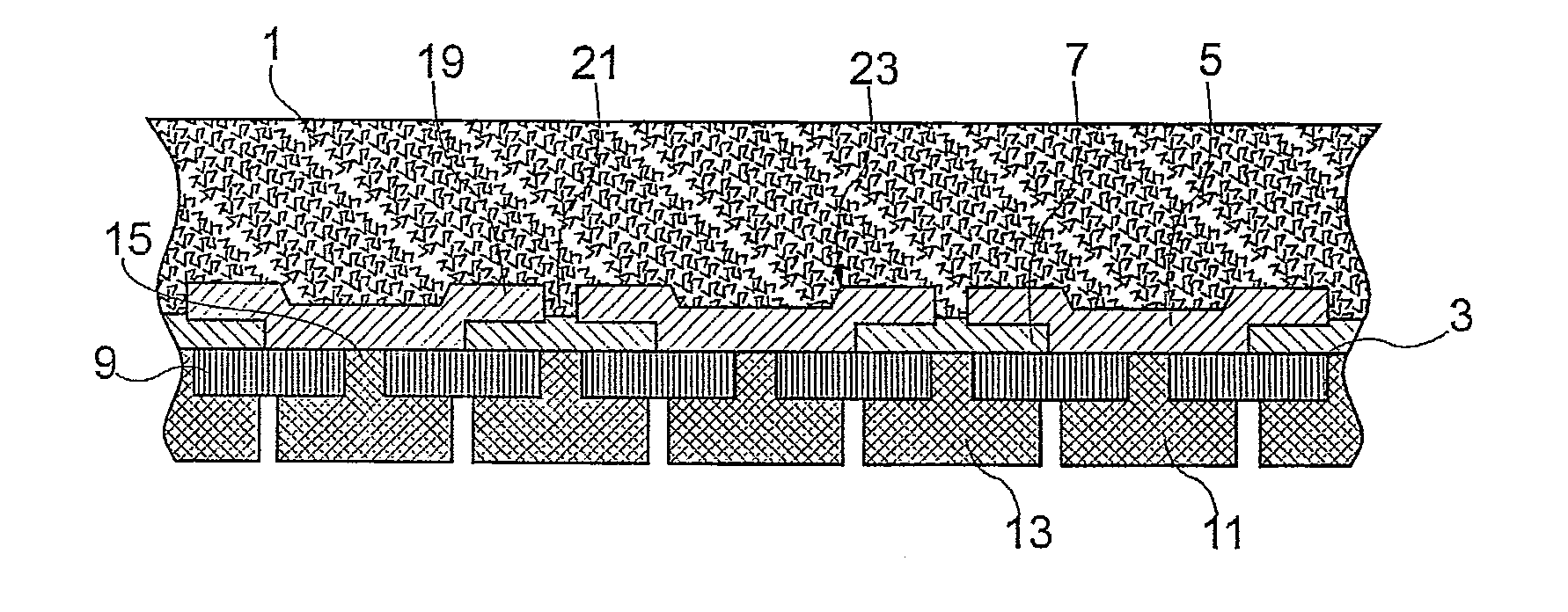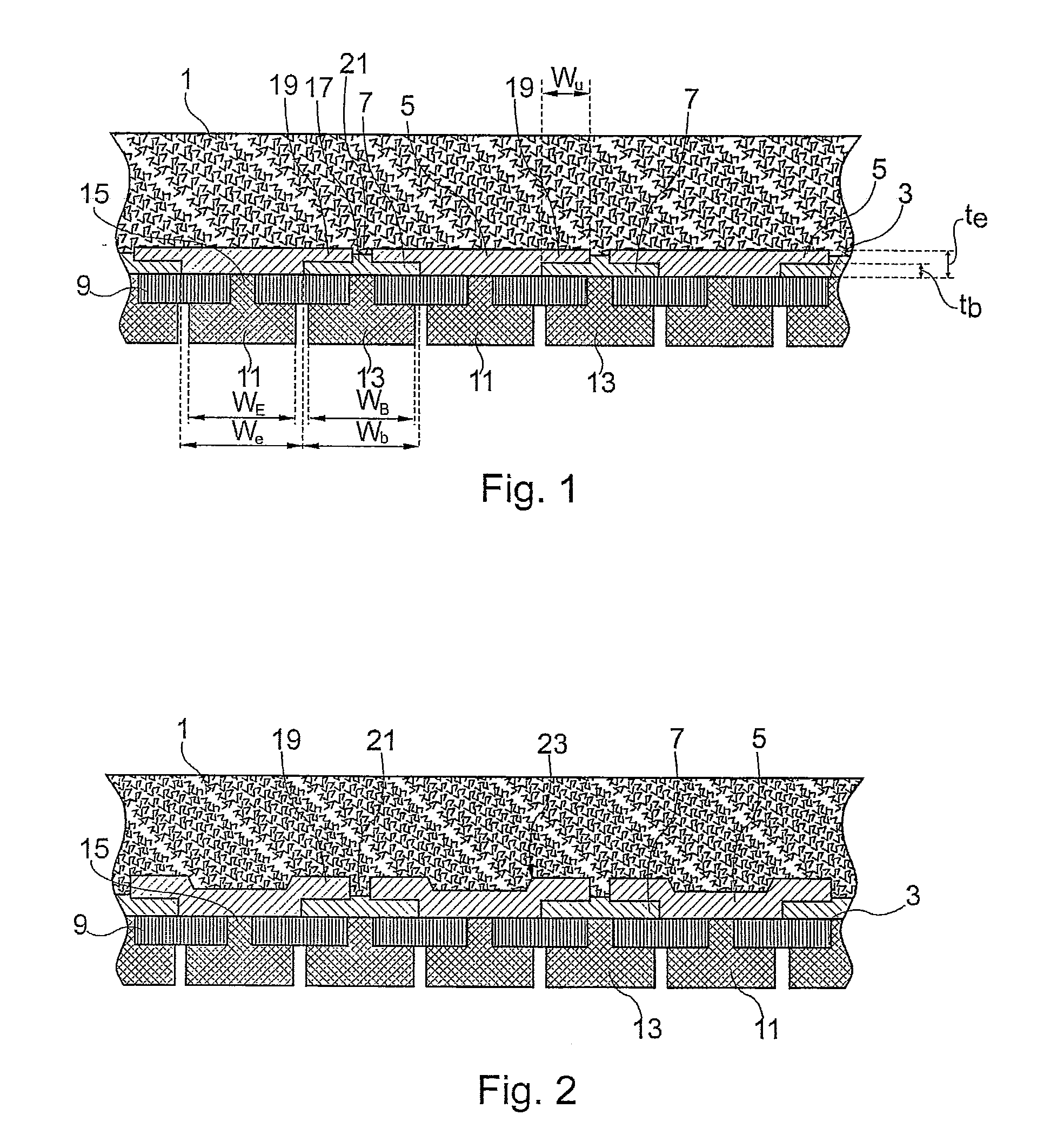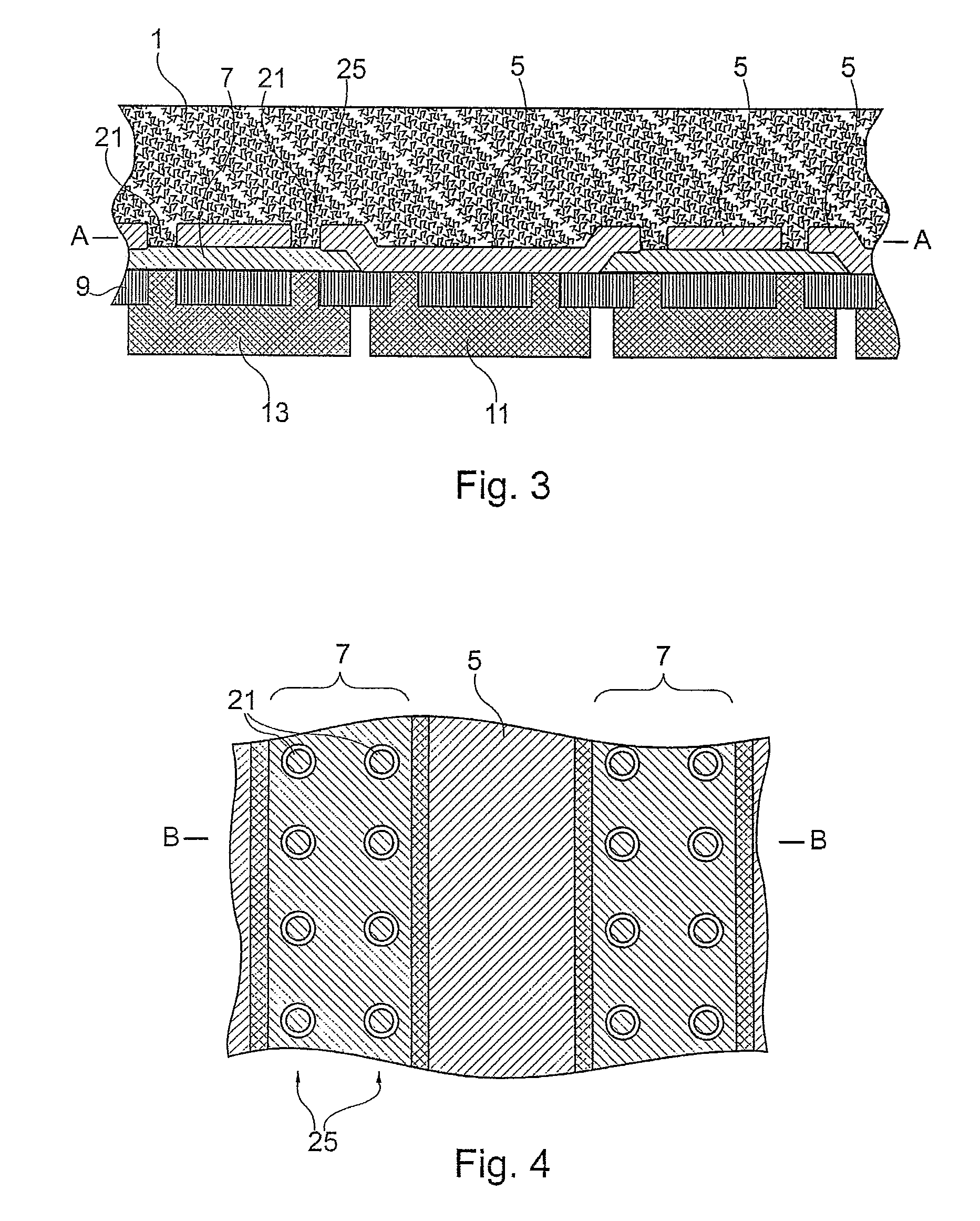Rear-contact solar cell having extensive rear side emitter regions and method for producing the same
- Summary
- Abstract
- Description
- Claims
- Application Information
AI Technical Summary
Benefits of technology
Problems solved by technology
Method used
Image
Examples
Embodiment Construction
[0065]The rear-contact solar cell according to the invention shown in cross section in FIG. 1 has a semiconductor substrate 1 in the form of a silicon wafer. Both emitter regions 5 and base regions 7 are formed on the rear side surface 3 of the semiconductor substrate 1. A dielectric layer 9 made of silicon oxide or silicon nitride, which can serve to passivate the surface of the semiconductor substrate and / or as a rear side reflector, but does not necessarily have to be electrically insulating, is also located on the rear side surface 3. The emitter contacts 11 and the base contacts 13 are then formed over the dielectric layer 9. Both the emitter and the base contacts 11, 13 are formed in the form of elongate, finger-shaped contacts running perpendicularly to the plane of the drawing. They have substantially the same widths wE, wB. The emitter contact 11 contacts an emitter region 5 through line-shaped openings or through dot-shaped openings 15, which are adjacently arranged linear...
PUM
 Login to View More
Login to View More Abstract
Description
Claims
Application Information
 Login to View More
Login to View More - R&D
- Intellectual Property
- Life Sciences
- Materials
- Tech Scout
- Unparalleled Data Quality
- Higher Quality Content
- 60% Fewer Hallucinations
Browse by: Latest US Patents, China's latest patents, Technical Efficacy Thesaurus, Application Domain, Technology Topic, Popular Technical Reports.
© 2025 PatSnap. All rights reserved.Legal|Privacy policy|Modern Slavery Act Transparency Statement|Sitemap|About US| Contact US: help@patsnap.com



